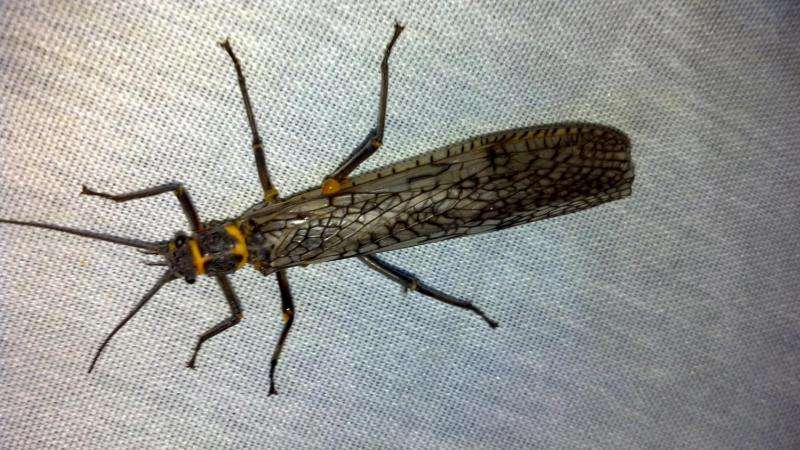How did the stonefly cross the lake? The mystery of stoneflies recolonising a USA island

Massive glaciers once covered an island in one of the Great Lakes, USA, leaving it largely devoid of life. Its subsequent recolonisation by insects triggered the curiosity of entomologist R. Edward DeWalt and graduate student Eric J. South of the Illinois Natural History Survey and Department of Entomology. Not only did they prove there were significantly fewer species, compared to the mainland, but also that smaller stonefly species appeared to be more capable of recolonizing the island. This study was published in the open-access journal ZooKeys .
Isle Royale is a large island and national park in the middle of Lake Superior, isolated from the mainland by 22—70 km distance. As recently as 8,000—10,000 years ago, glaciers completely covered the island making it almost uninhabitable.
Over the last 10 millennia mammals as large as moose and wolves, swam, floated, flew, or walked on ice bridges to the island. Therefore, it seemed logical that it was the larger size that allowed some species to cross the water. However, as far as stoneflies are concerned, the results turned out quite different.
"We sampled stoneflies (Plecoptera), mayflies (Ephemeroptera), and caddisflies (Trichoptera), because they are important water quality indicators. Our laboratory has expertise in the taxonomy and ecology of these important species and we know that national parks potentially provide us with wilderness quality conditions," says DeWalt.
Being much better fliers, the mayflies and caddisflies did not show a particular relation between a species' body size and their ability to recolonise the island. Conversely, stoneflies on the island were considerably smaller than their mainland counterparts.
"Stoneflies are clumsy fliers, especially the larger species. Large ones are not very aerodynamic and because of this they don't have the energy reserves to cover the distance to the island. Few species of stoneflies can actually live in the lake, so most could not swim to the island," explains DeWalt. "Mayflies and caddisflies, on the other hand, are known to be better fliers and tolerant of lake conditions, which would allow for more of the mainland species and similarly sized species to reach Isle Royale.
"Smaller stoneflies have probably used updrafts from the mainland and prevailing winds to get to the island," the scientist suggests. "The wind just held them up until they reached the island."
More information: R. DeWalt et al. Ephemeroptera, Plecoptera, and Trichoptera on Isle Royale National Park, USA, compared to mainland species pool and size distribution, ZooKeys (2015). DOI: 10.3897/zookeys.532.6478
Journal information: ZooKeys
Provided by Pensoft Publishers
















